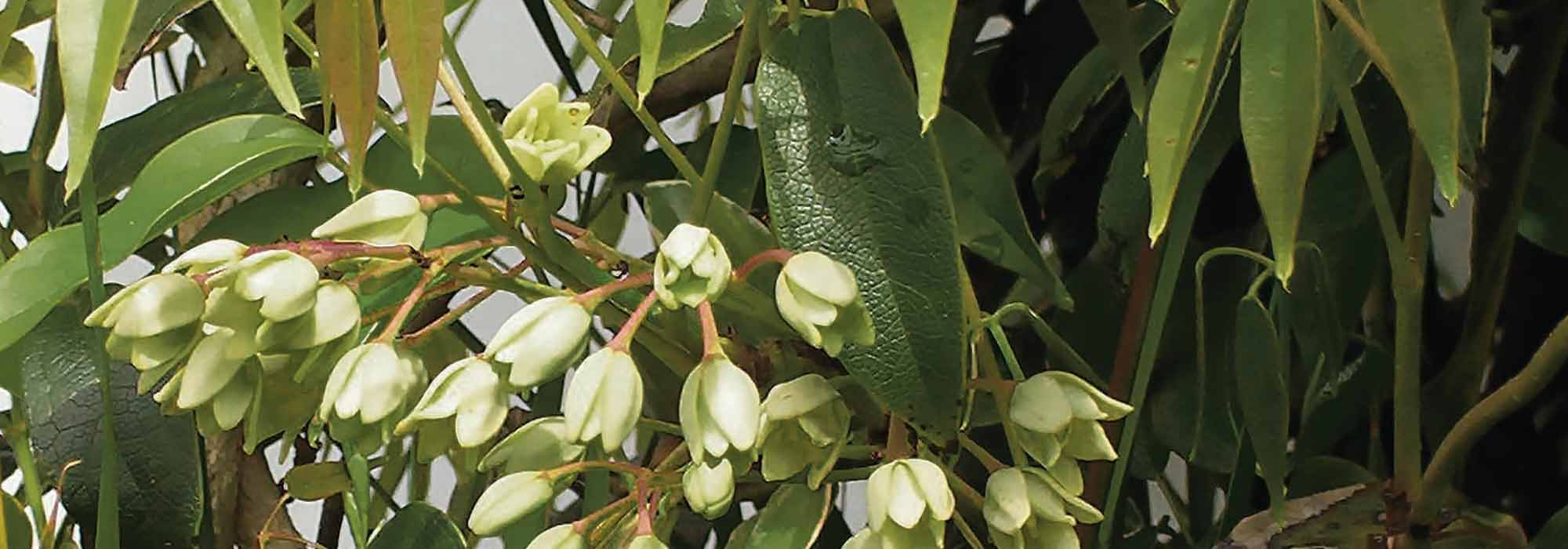
Growing Holboellia in pots
Selection, planting, maintenance: everything you need to know to grow Chinese Blue Vine on a terrace or balcony.
Contents
Are you looking for an original evergreen climbing plant to green up a pot or container on a balcony, terrace, or courtyard? Look no further, the Holboellia, a liana still too little known, has many advantages!
Provided you give it the proper care, you can enjoy its rapid growth, lush foliage, and stunningly fragrant flowering year after year. Follow our steps to grow this lovely voluble climbing plant, the Holboellia: how to choose, plant, and maintain it properly.
Choosing your Holboellia
Proximity to Akebia, Holboellia is a vigorous liana, valued for its evergreen foliage and its bell-shaped, original, and fragrant flowering, blooming in cream tones tinged with yellow and purple. It produces curious purple-tinged fruits in late season: decorative, you can also taste them if you wish, as they are edible, with a flavour reminiscent of pear.
Among the different varieties of this plant, also known as Goufla, the most commonly found in our gardens is Holboellia coriacea or Chinese Blue Vine (referring to its bluish fruits) and Holboellia latifolia. Both can be grown in containers of suitable dimensions as well as in the ground.
Holboellia coriacea or Chinese Blue Vine
It features dark green evergreen foliage and a subtle spring flowering, in April-May. Remarkably fragrant, this flowering shows a differentiation between male and female flowers: the small female flowers are pale greenish-white and emerge at the base of new shoots. The male flowers are more purple and grow at the tips of the voluble stems. Purple fruits will appear if the summer has been warm enough and pollination is ensured. Holboellia coriacea is moderately hardy (Zone 8a, down to -12°C) but easy to grow in well-drained, rich, humus-bearing soil. It prefers a sunny or semi-shaded position. This plant is a voluble liana, reaching a height at maturity of 5m with a spread of 1m
The Holboellia latifolia
It features a slightly larger dark green evergreen foliage and a similarly subtle spring flowering, but slightly earlier, appearing from March to April. Just as fragrant, this flowering also shows a differentiation between male and female flowers. It also produces purple fruits in autumn if conditions are right. Holboellia latifolia shares the same characteristics of hardiness, cultivation requirements, and growth as Holboellia coriacea.
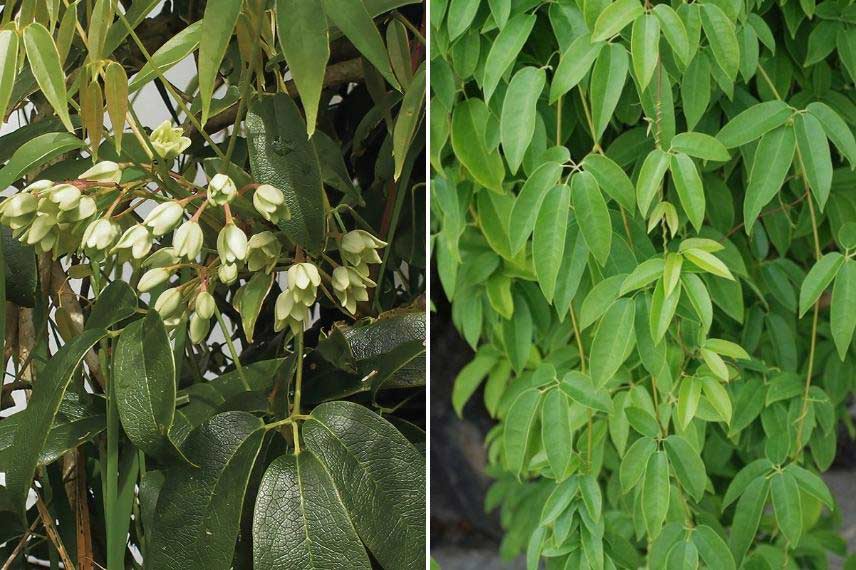
Holboellia coriacea and Holboellia latifolia
Choosing the Pot
To ensure your Holboellia develops properly, you should choose the largest possible pot. It should be wide enough, deep enough, and of course, have a drainage hole at the bottom.
Preferably, choose a terracotta pot, a material that is often more aesthetically pleasing and, importantly, more environmentally friendly than plastic. Opt for pots that are guaranteed to be frost-resistant and thicker than average.
Depending on your preferred style, you may also choose a large planter or a big wooden trough.
If you are gardening on a balcony or a rooftop terrace, you might prefer a resin container, which is much lighter.
When it comes to planting a climbing plant, it may be wise to select a planter with an integrated trellis on which the voluble stems can cling as they grow. Otherwise, you will need to provide a support: position the pot against a wall where a trellis for climbing plants or a mesh can be fixed, at the foot of a pergola or a gazebo. You can guide the stems of the Holboellia as they grow to cover the support evenly by clinging with their tendrils.

Terracotta pot or large wooden trough: the choice of container will depend on your tastes and the purpose of your Holboellia
Discover other Holboellia
View all →Available in 1 sizes
Available in 1 sizes
Available in 1 sizes
Available in 1 sizes
Available in 1 sizes
Choosing the substrate and planting
Originating from the mixed forests and riverbanks of the Himalayas, Holboellia thrives in a rich, humus-bearing substrate, ensuring good drainage. This can be achieved with a layer of gravel or clay balls at least 3 cm thick at the bottom of the pot or container. Ideally, a mix of good garden soil or topsoil, potting soil, and organic matter such as compost or manure is recommended.

Plant according to best practices, adding clay balls and quality substrate
Container planting can be done almost all year round, except during frost and in the hottest months when abundant watering will be necessary. The ideal time to plant Holboellia is in spring or autumn.
If, upon removing the pot, the roots are too compacted or form a root ball, they should be gently untangled. Plant, leaving a few centimetres below the edge of the container, firm the soil by hand, and water. It is best to apply a organic mulch (wood chips) or mineral (gravel, pebbles) on the soil surface to retain moisture and reduce the frequency of watering.
Read also
Holboellia: 7 successful pairing ideasChoosing the Right Exposure
For your Holboellia, choose a sunny location but not scorching, well protected from cold winds. As Holboellia breaks dormancy early in the season, it is particularly sensitive to spring frosts. Avoid east-facing walls whenever possible: this will prevent young flower buds from being subjected to the successive freezing and thawing that occurs in that exposure.
Watering and Maintenance
- Your Holboellia is now installed on your terrace in its lovely container, in the sun or partial shade and sheltered from cold winds. It will need watering on average twice a week, adjusting the amount of water to the size of the container. It is possible to automate pot watering. There are kits available for this, featuring drip irrigation or micro-sprayers. However, you will need a permanent water source to supply the system, which will be triggered precisely by a battery-operated timer. Setting up the whole system is easy and discreet, with the hoses able to be hidden at the back of the containers. This is a simple way to keep your Holboellia alive during your absences.
→ To water wisely, check out our article: Watering Potted Plants – How to Water Your Container, Window Box or Pot Plants Properly?
- Regularly replenish the organic mulch that will tend to decompose. This will help maintain good moisture at the base of your Holboellia.
- The substrate of a potted plant tends to deplete quite quickly. Your plant needs a regular supply of organic matter to develop, flower, and fruit properly. In spring, provide an organic amendment based on well-matured compost, manure, or horn at the base of your Holboellia. Avoid chemical fertilisers, especially if you wish to consume its fruits.
- Prune annually after flowering, in spring, to limit growth as it is a fast-growing liana that can reach 5m in height in the ground. If your plant produces fruit, you can pick them as they ripen and enjoy them. If necessary, you can perform a rejuvenation pruning to encourage young shoots and remove old wood.
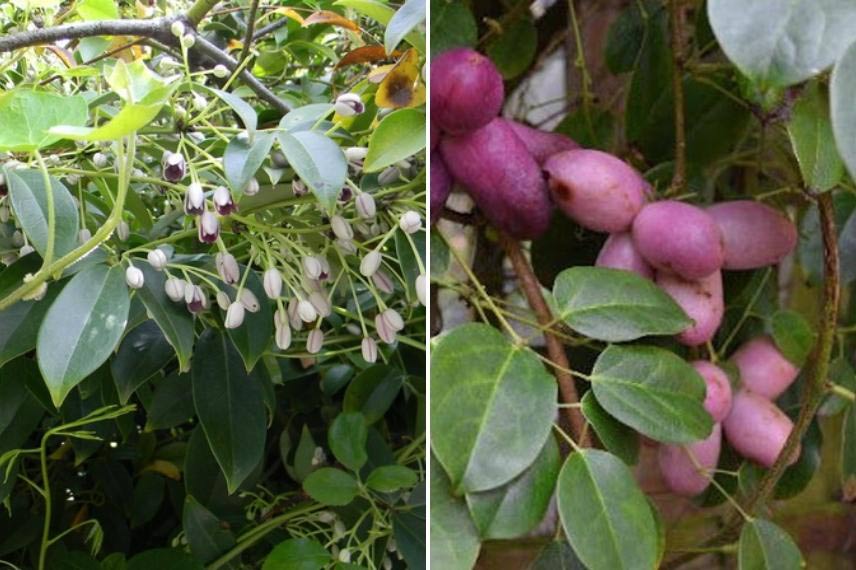 Pruning will help control the growth of your Holboellia, remove dead wood, and harvest the fruits at ripeness.
Pruning will help control the growth of your Holboellia, remove dead wood, and harvest the fruits at ripeness.
- If winter cold threatens to be too intense for the Holboellia (from -10°C), move it to a bright, unheated place, protected from frost.
- Subscribe!
- Contents
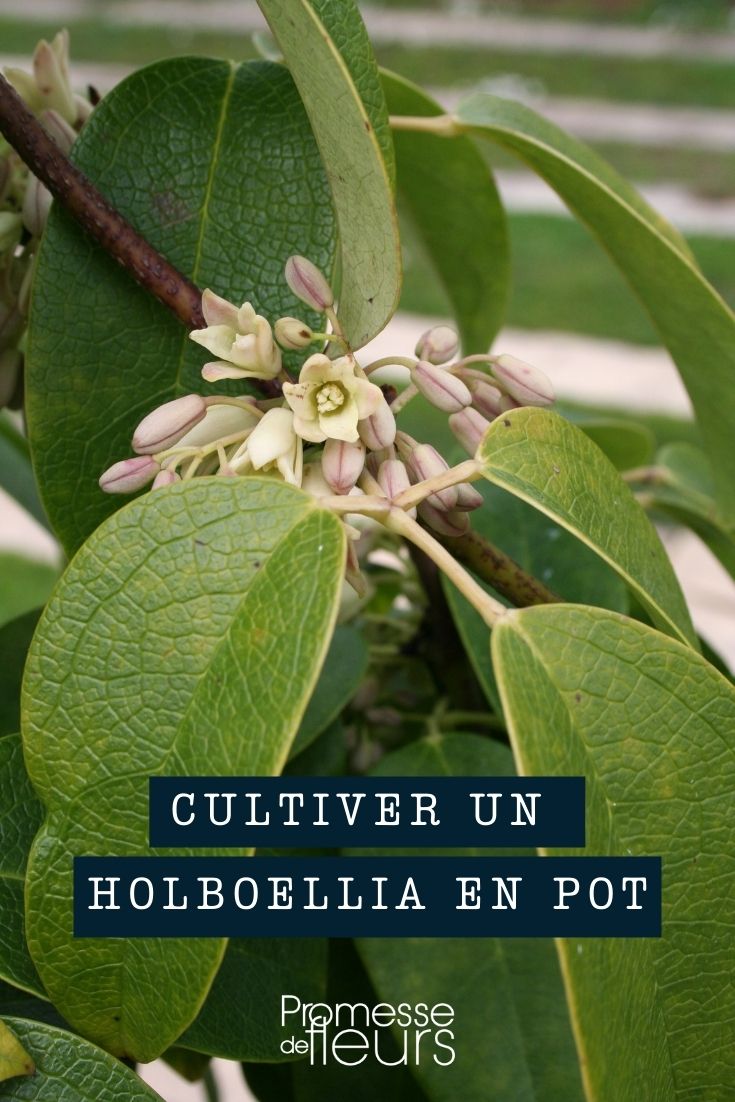

































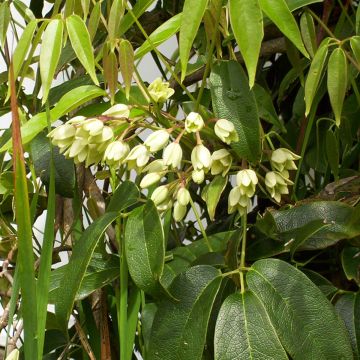


Comments